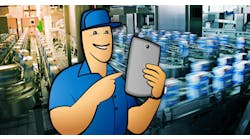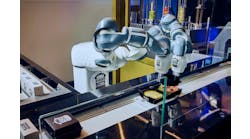Connected “things” are everywhere – from watches to cars to home appliances – changing our interactions with friends, family and co-workers every day. These connected devices make up the Internet of Things (IoT), and while IoT isn’t a new topic, today’s IoT conversation heavily focuses on how consumers benefit from the new technology. But what about businesses? Can they benefit from smart, connected technology? Yes – and manufacturers have some of the greatest opportunities to leverage IoT technology on the plant floor.
Today’s factory bears little resemblance to the stereotypical image of manufacturing. Long gone are the days of repetitious assembly lines where workers create part after identical part. The modern manufacturing plant floor is a hub of technology, full of sensors, electronic controls and automated equipment. These interconnected devices drive efficiency, quality and flexibility. And here’s where manufacturers will see the biggest impact of these new connections.
More Customizable Products
As customer demands for products change, manufacturers adjust. Automation and the connected factory produce a wider variety of products and product variations in smaller quantities more quickly, answering the market’s increasing demand for near-custom and highly configured products. Fast, efficient and flexible computerized machines are provided instructions for the exact requirements for each product at each moment of production. This is a full-scale transformation of the old-style “economies of scale” approach that drove mass-produced consumer goods.
Quality Control
Factory productivity continues to rise, as plants produce more and more with ever increasing efficiency and quality. Connected tools and machines are a key aspect of these gains. Take the Internet Protocol (IP) torque wrench in the assembly of a complex part, for example. When connected to the cloud, the IP torque wrench captures the torque applied to a specific part, the specific wrench that was used, when that wrench was last calibrated and the employee who used it. Faults can be detected in real time, and even when they’re missed the cloud can trace every part affected back to the root cause. Quality and speed are improved.
Real-time traceability
Beyond the four walls of the production facility, the shift to cloud-based software systems allows employees, suppliers and customers worldwide to view the status of an order, work-in-progress, inventory, equipment availability, and much more. Visibility won’t stop when the product leaves the plant. Smart products will not only interact with the customer in new ways but will also be able to stay in contact with the producer for better long-term performance, maintenance and support. Quality issues not only get service attention, but can influence future product design. Connected smart technology and IoT brings the processes and the products together into a new ecosystem for added customer value.
Want to learn more about technology on the plant floor? Download the Plex State of Manufacturing Technology Report to see what types of new technology manufacturers are incorporating in their daily operations.




